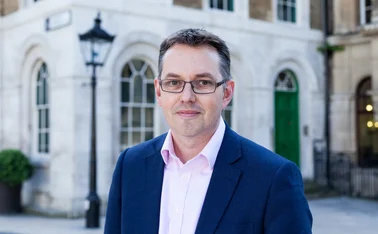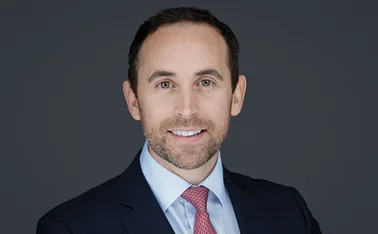
Broking success: Lessons from Cambridge
S-Tech Insurance Services founder and CEO Shaun Walker talks to Caitlin Morrison about why Cambridge is good for start-ups and the importance of chartered status
▶ How did S-Tech come into being?
I worked for Royal Insurance, which was based here in Cambridge, with the prospect of becoming what was known in those days as an inspector. As a result of working around the Cambridge area, it was quite obvious to me that Royal was a bit too cautious on looking at some of the risks that came out of the University.
After five years I decided to up and leave. I set up my own brokerage and was quickly followed by two other colleagues from Royal over the next three years.
▶ Where does the name come from?
Well because of the science based nature of the company it was going to be called Scientific and Technical, but that was a bit of a mouthful – I mean S-Tech is bad enough.
And although we do a lot of business with science-based industries, we also do a lot of traditional business. There are a lot of green fields around here so we do farmers, we do builders and we have a particular interest in museums and charities as well. But science is our main area.
 ▶ Why did you choose to get involved in the science area?
▶ Why did you choose to get involved in the science area?
There are about five or six major research parks in and around Cambridge, as well the individual colleges having their own labs. This is a very fertile area for new business start-ups in the science-based arena. It’s very broad, because you have designers, software houses, hardware companies, consultancies and then life sciences. We try to get involved with most of the major networks of businesses because that’s a great source for us. We sponsor their events and attend their exhibitions.
▶ Is it difficult to get the expertise for this kind of work? Do you hire people with a scientific background?
No. But we have got people who we can call upon [for assistance], who happen to be our clients. We don’t employ people with a scientific background because, to be quite honest, that’s not what’s needed.
What’s needed is somebody who can dissect the information they’re given and put it into layman’s terms. We spend a lot of time with our customers trying to find out what exactly the business is all about. Most people who work in the insurance industry, ourselves included, are very simplistic folk and they just want [the risk] explained in very, very simple terms.
▶ How has the business grown, has it been through acquisitions?
The process has been mainly one of bolting on smaller businesses. We operate from this single site, and that’s been a deliberate ploy as we want to keep the expertise in-house here. We’ve done eight acquisitions over the years, and they’ve all been bolt-ons, teams of people or small brokerages that have come to work with us in this building.
We look for a certain culture when we’re bringing people in – the people joining have got to buy into the service standards and the culture that we have.
▶ Does S-Tech have chartered status?
We obtained chartered status last year. Regulation is always at the back of these things because, if you’re properly regulated, then you’ve got to show a certain standard. But we also wanted to demonstrate that the skill set that we had here was fit for purpose and current. So the two really then came hand in hand, if we got all the staff to where we wanted them to be, technically, examination wise and so forth, then it was a natural progression to getting them to chartered status.
We would hope that the fact there are so few chartered brokers out there, relatively speaking, will help our marketing activities going forward. But that was really secondary to getting our people up to speed.

▶ Was it a difficult process?
We deliberately brought in our own training manager to undertake three main things. Firstly to help us achieve chartered status, which meant a whole new training regime had to be implemented and monitored.
We also have to drive the training on a continuous basis, to make sure people are going on through the examinations. Anybody that we bring in now has to buy into that. And thirdly, we wanted the training manager to test all of our existing staff to make sure they were up to speed. The training manager did a gap analysis – which was basically a test of the gap between what the staff know, and what they should know, and a training regime was put in place for any gaps that were uncovered.
▶ Do you have your own claims team?
Yes, it’s essential that we have our own claims department, they’re the shop window of our business really. We would be very reluctant to let any of our customers deal directly with an insurer on a claim, we handle the whole thing. By doing that we demonstrate service and show that we’re on top of the job. At the end of the day that’s what the customer is paying for.
We’ve done that since day one. It’s simply the ethos we have on customer service. [Customers] want their claims paid and they want to be talking to the same person on their claim every time. They don’t want to be talking to a call centre at an insurance company in order to get something sorted out.
 ▶ Has working with technology and science companies made it easier for S-Tech to keep up-to-date with technology?
▶ Has working with technology and science companies made it easier for S-Tech to keep up-to-date with technology?
I’d like to think so, but the reality is that we’ve got some way to go because it’s a moving picture. On the technology side, from a computer platform basis, it’s very difficult to get one overall standard that brokers and insurers will go for, everyone has their own agenda. All you can do at any one time is look at your own back office and its connectivity to insurance companies. It’s not that we’ve delayed anything, or haven’t pushed forward, it’s just that you have to really understand the benefits of changing your computer system before you do it. We’ve got a serious system here, it works very adequately. Other systems might have more benefits – but for an organisation our size changing the system is going to cost £250,000, so [we wouldn’t] do it lightly.
▶ What is the one thing you would change about the insurance industry?
We need access to decision makers and I’m sure every other broker in the country would tell you that too. We have sales guys who come in selling their wares in terms of what their company can do. But when you go to that person with a problem, they can’t sort it out, because they have to refer it in to someone else within the company. And they change almost as often as you change your socks. It’s very difficult. The problem with it is, over the years, insurers have cut back.
They’ve taken out the high-cost middle management who could be flexible, could make decisions and could look at the commercial realities of life. Those are the people that make things tick. If you can find those people within an insurer, and we’re fortunate in the main that we do, you make sure that you keep that relationship going. That is the biggest challenge that we have.
Only users who have a paid subscription or are part of a corporate subscription are able to print or copy content.
To access these options, along with all other subscription benefits, please contact info@insuranceage.co.uk.
You are currently unable to print this content. Please contact info@insuranceage.co.uk to find out more.
You are currently unable to copy this content. Please contact info@insuranceage.co.uk to find out more.
Copyright Infopro Digital Limited. All rights reserved.
As outlined in our terms and conditions, https://www.infopro-digital.com/terms-and-conditions/subscriptions/ (point 2.4), printing is limited to a single copy.
If you would like to purchase additional rights please email info@insuranceage.co.uk
Copyright Infopro Digital Limited. All rights reserved.
You may share this content using our article tools. As outlined in our terms and conditions, https://www.infopro-digital.com/terms-and-conditions/subscriptions/ (clause 2.4), an Authorised User may only make one copy of the materials for their own personal use. You must also comply with the restrictions in clause 2.5.
If you would like to purchase additional rights please email info@insuranceage.co.uk







